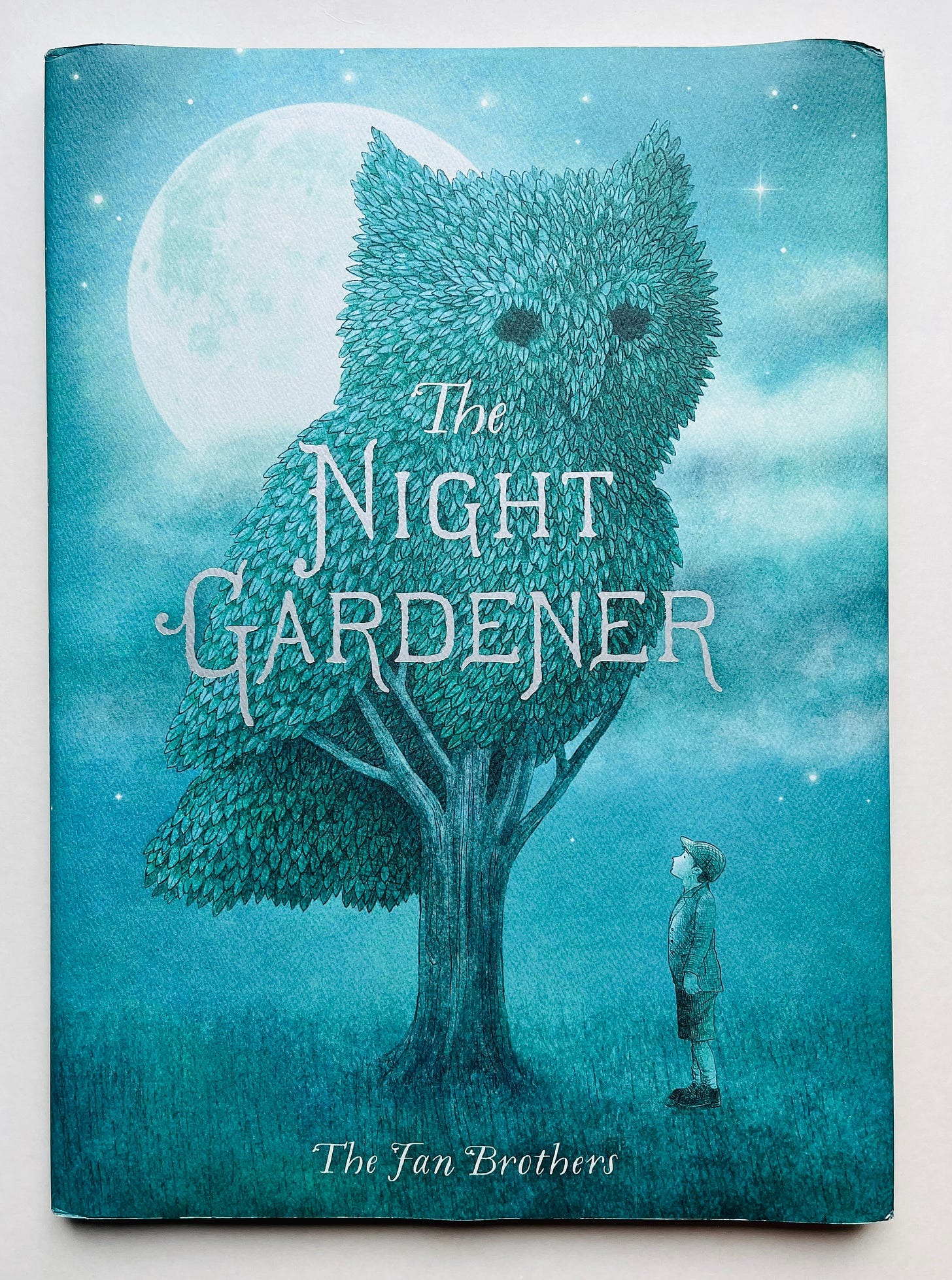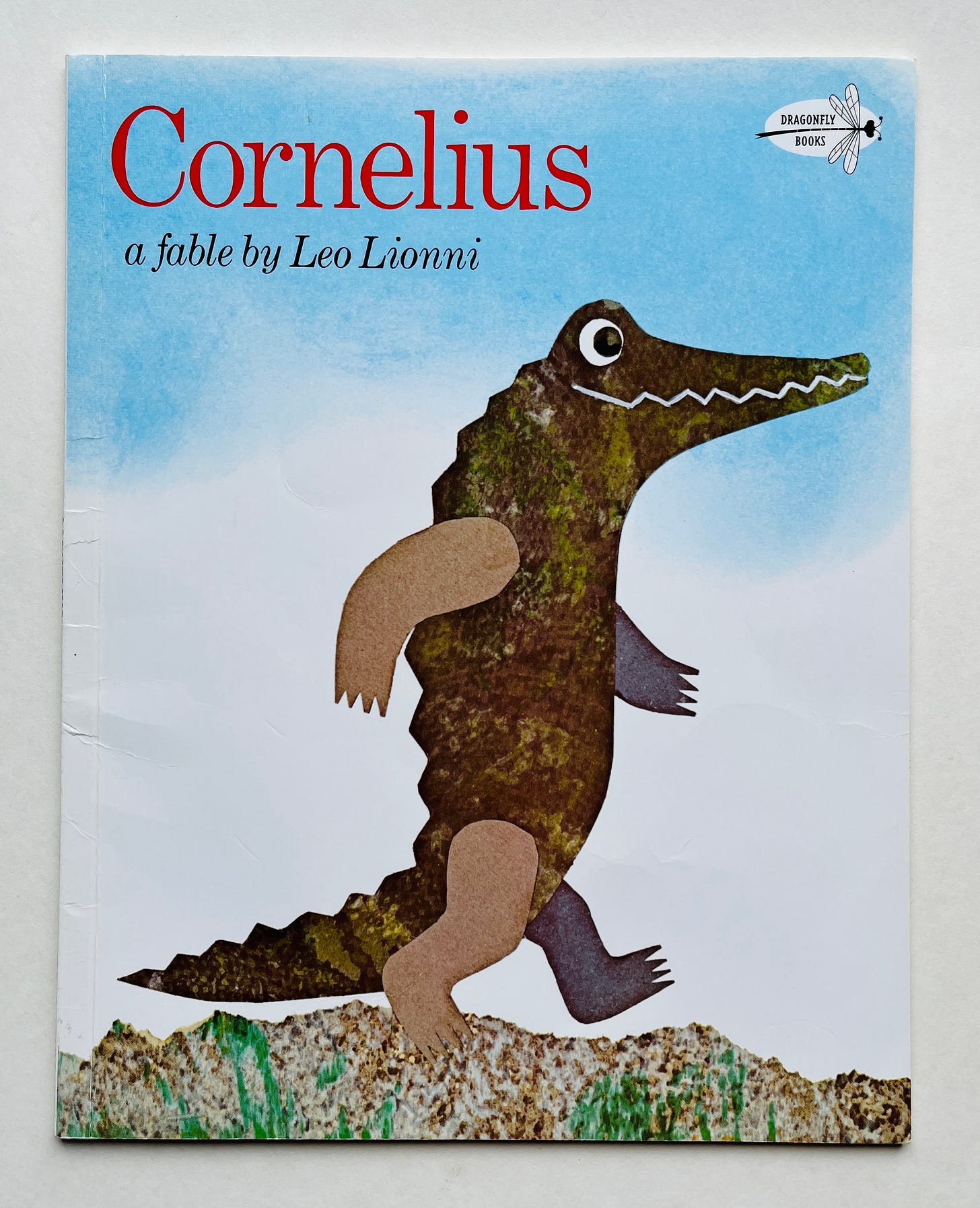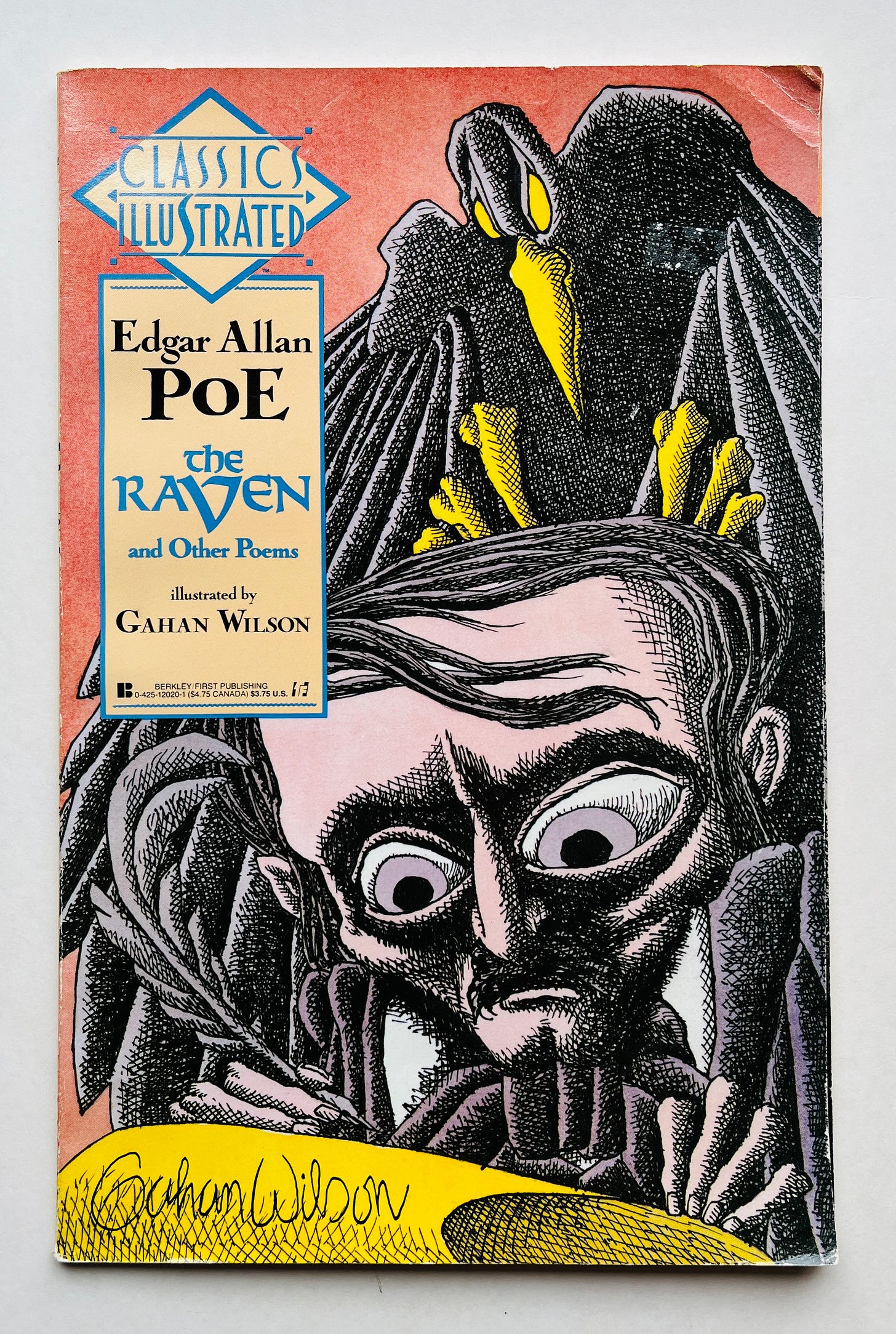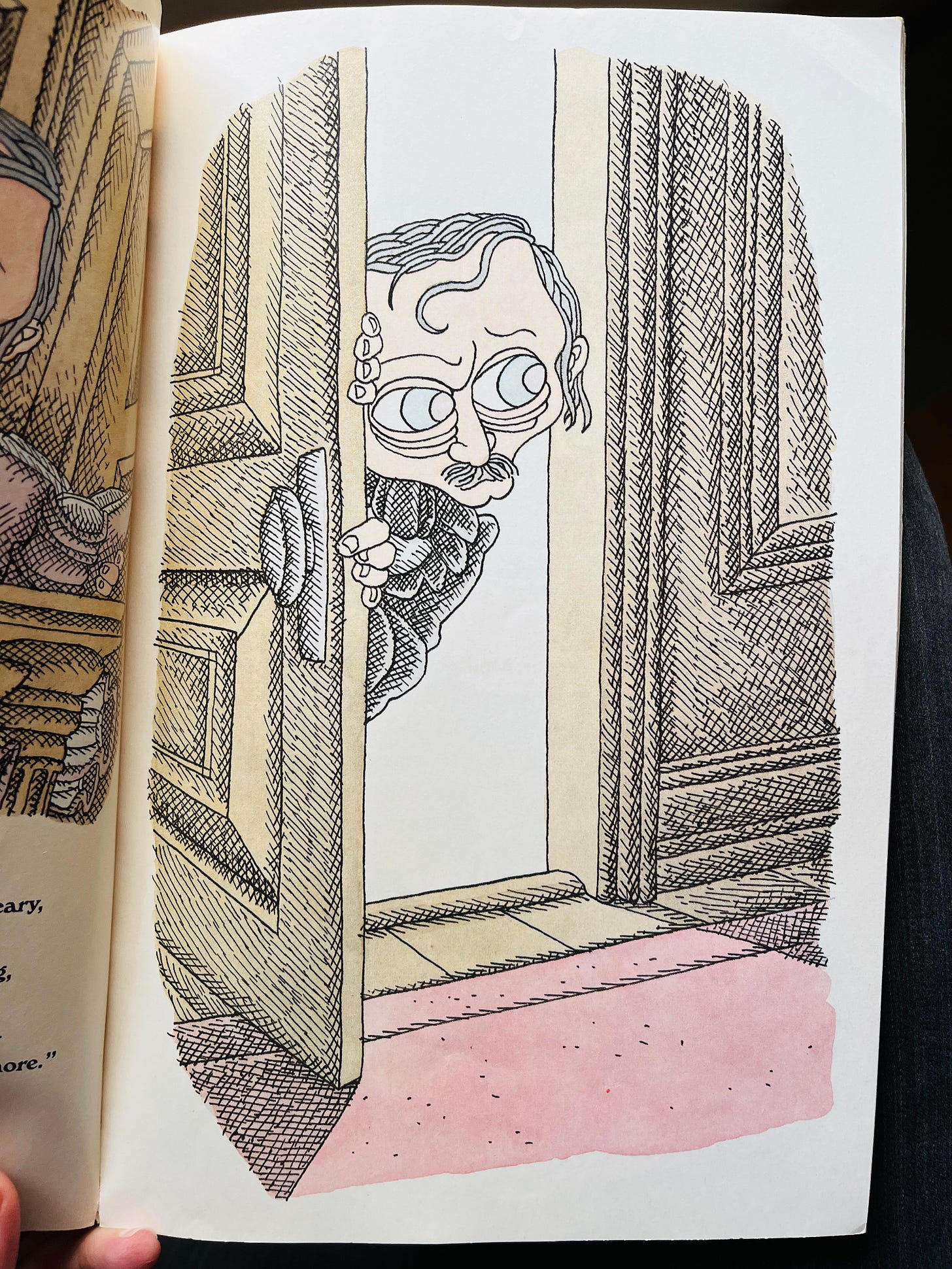Good morning! Thanks for being here.
I have an ask before we get started today.
Building a newsletter is a long-term, long-game project — there is a Jane Smiley quote, “I believe that you either love the work or the rewards. Life is a lot easier if you love the work,” and I really and truly love the work. And I am grateful for every single one of you — whether you open this newsletter every week, a few times a month, or once in a blue moon.
Here’s the thing: I created this newsletter in part because I wished for something like it in my own inbox. I want it to reach a lot of people.
Not so that I can make money from subscriptions — that’s nice, don’t get me wrong — but so that I can inspire, support, and serve as many people as possible, because I believe to my core in the importance of reading to children.
But I don’t know more people than I know, you know?
My ask today is for your help: will you forward this to someone? I even wrote a message that’s does the work for you and will open up in the email program of your choice:
Some people that might like this newsletter:
Fellow caregivers — friends and frenemies alike 😜
Grandparents/aunts/uncles/other extended family (helpful for ideas for birthday and holiday gifts!)
Your kid’s teacher, coach, school librarian, reading specialist, or therapist
Your daycare provider/support folks when it comes to looking after your child/ren
The children’s librarian and staff at your local library
Your coworkers who are caregivers to young children in any capacity
People you “know” on social media
Anyone in your life that works with children, even if they don’t have them (plenty of your fellow subscribers don’t have them!)
To those of you who have already done this for me, once or on more than one occasion: I deeply appreciate your support. I have built the foundation and applied the mortar for this newsletter, but you have helped me raise it brick by brick.
Thank you so much for your help.
The Night Gardener by Terry and Eric Fan (2016)
The Fan Brothers’ marvelous, dream-like graphite and ink illustrations are by no means the loveliest part of this book — and that’s really saying something, because do you see this beautiful cover? No, the story of The Night Gardener itself is where the most impressive beauty lies.
One day a young boy named William, who lives in an entirely sepia-colored town, discovers a topiary of a great, green owl in his yard. No one knows where it came from, but it hardly matters — the next day, a cat topiary appears, and the next, a rabbit, and the next, a parakeet. When William finally discovers who has been creating these masterpieces, the night gardener invites him to help and he — along with his little town — is fundamentally changed forever.
This lovely book offers a magical story that will captivate preschoolers and early elementary kiddos, but I think its greatest gift lies in its more subtle, underlying message about sharing one’s talents with the world, creating beauty without credit, and how sometimes, seemingly useless actions can have an enormous impact on others.
The Perfectly Perfect Wish by Lisa Mantchev, illustrated by Jessica Courtney-Tickle (2020)
One morning, a little girl finds a wish on the ground, but only one wish — the only instructions are No Wishing For More Wishes. Which means she has to come up with a perfectly perfect wish.
She could wish for things she wants for herself, like a blue ribbon at the horse show, a trip to Japan, real ballerina pointe shoes, or for things other people want, like a puppy, or a house, or a parent to come home from deployment. She thinks long and hard — a process beautifully rendered by Courtney-Tickle’s warm watercolor and digital illustrations — until she comes up with a marvelous, generous, and yes, perfectly perfect wish.
This is a lovely, simple story about the richness of life, made all the richer when we share what we have.
Cornelius by Leo Lionni (1983)
By far my favorite Lionni book, don’t let the age of this oldie-but-goodie deter you. The story of Cornelius — a sweet crocodile who does pretty much everything differently from all the other crocodiles (including, as you can see, walking upright) — is a simple but timelessly refreshing fable about being who you are. (If other people’s — or crocodile’s — minds are changed in the process, all the better.)
Toddlers and preschoolers — or anyone struggling with the discomfort of standing out, which can sometimes be all of us — will enjoy this satisfying tale.
Encyclopedia of American Indian History & Culture: Stories, Timelines, Maps, and More by Cynthia O'Brien (2019)
This stunning comprehensive overview of American Indian history and culture belongs on the shelf in every classroom and library, if not every home. Here, National Geographic showcases what it does best — presents well-researched narratives and facts alongside maps, timelines, and of course, remarkable photography showcasing 160+ North American Native tribes and nations.
This is not a book you’ll sit down and read cover-to-cover, even as an adult, but it’s a fantastic title to have on hand as a reference, a homeschool social studies spine, or to browse. (The regional — rather than alphabetical — arrangement makes browsing easier than it might be otherwise. And even pre-readers can get something out of this, just by looking at the pictures.)
I highly recommend this gorgeous, outstanding book.
The Raven and Other Poems by Edgar Allan Poe, illustrated by Gahan Wilson (1990)
Maybe you want to introduce your children to “the classics” — whatever that means to you — but you don’t know how to do it: old books (or old poems) can feel, well, old. Dry. Uninteresting. How can you keep your kids’ attention?
Enter illustrations.
Now, I don’t think all classics need to be — or probably should be — illustrated. And don’t take this as me endorsing abridgments, because no. (Jessie Wise and Susan Wise Bauer long ago convinced me abridged versions have their place as stepping stones to the real thing one day, but mostly, no.) Sometimes, though, illustrations offer an entry point to material that might otherwise seem impenetrable.
Exactly so with this Classics Illustrated version of several of Poe’s best — and best-known — poems: “The Raven,” obviously, as well as “Annabel Lee,” “Eldorado,” “The City in the Sea,” and so on, accentuated by Wilson’s line drawings (which I find somehow both creepy and hilarious).
I’ve loved Poe since I was in elementary school and devoured an old red hardcover copy of his stories I’d found in a used bookstore, no doubt thanks to my dad — proof that even young kids can get into the old, dry stuff… which is actually not uninteresting at all.
As a thank you for sharing this newsletter with your own networks, I’m running a 30-day free trial for anyone who wants to try out a paid subscription for a month:
Happy reading! And in case you need a reminder: you’re doing a great job 💪
Sarah










This is a great list! I'm super happy to see The Night Gardener on it!
Sarah, YOU are doing a great job :) Shared with a few people and will try to think of more.
The Night Gardener is one of my all-time favorite books. The illustrations, the story. It's such a poignant book. We also love The Barnabus Project by the Fan Brothers. Have you read it?
The rest of these recommendations are new to me and I can't wait to check them out. I'm excited for summer to arrive soon, which means more laid-back mornings and thus more family reading!